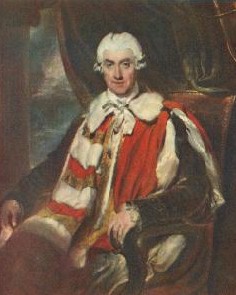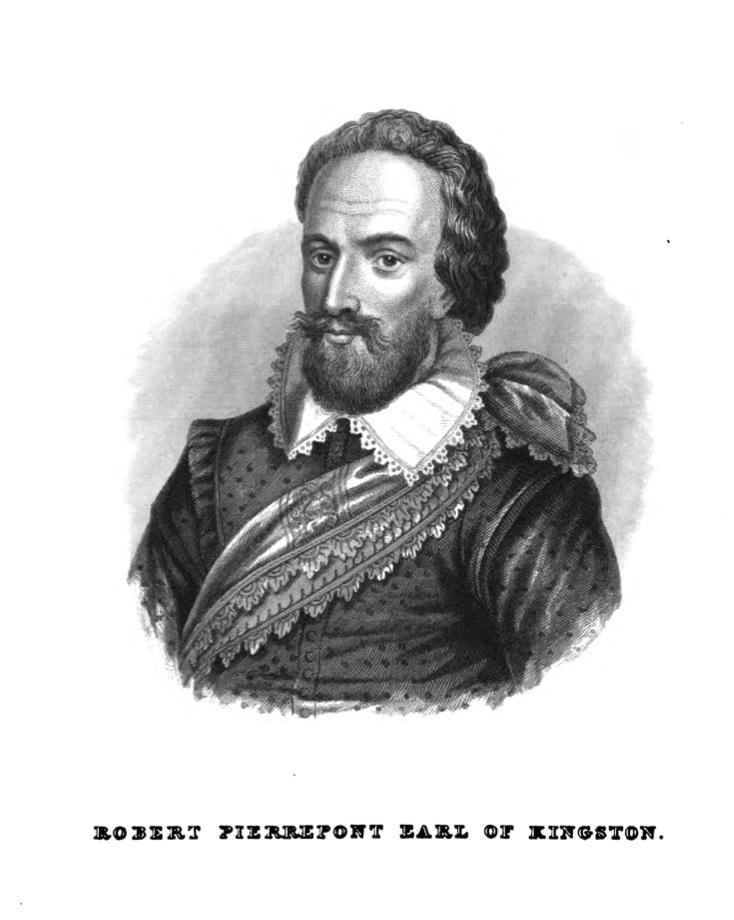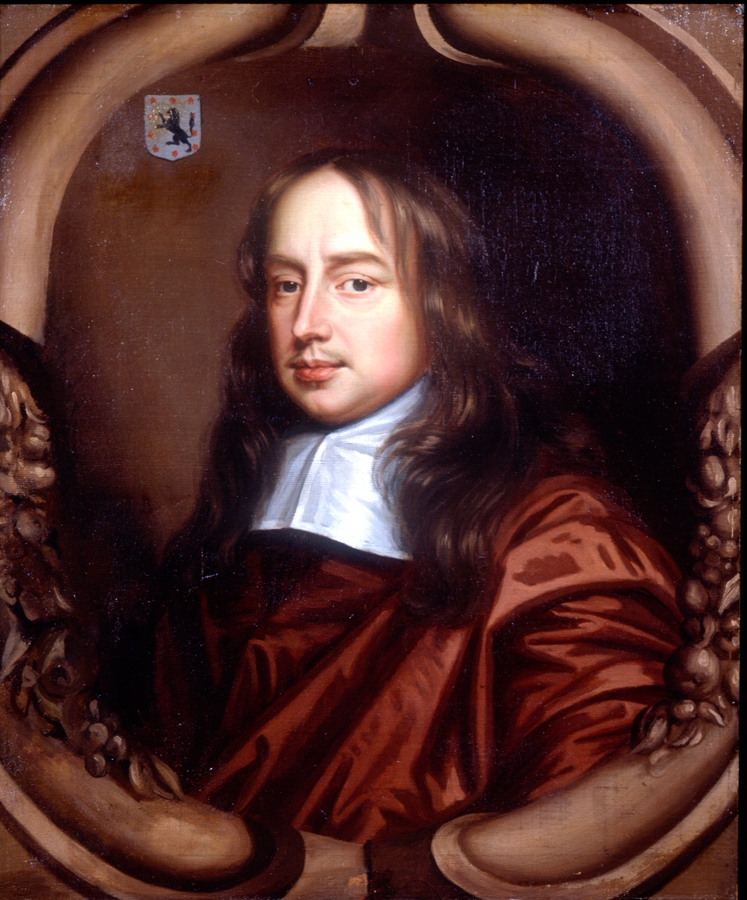|
Gertrude Pierrepont, Countess Of Kingston-upon-Hull
Gertrude Pierrepont, Countess of Kingston-upon-Hull (29 September 1580 – 1649), born Gertrude Talbot, was an English noblewoman and peeress, the wife of Robert Pierrepont, 1st Earl of Kingston-upon-Hull, and the daughter of the Honourable Henry Talbot, and his wife, the former Elizabeth Reyner. Henry Talbot was a younger son of George Talbot, 6th Earl of Shrewsbury, and Gertrude was his elder daughter and co-heir. She married Pierrepont at Kinwalton Church, on 8 January 1601, and he was created a Viscount in 1627, and an Earl in 1628. Their children included: *Henry Pierrepont, 1st Marquess of Dorchester (1606–1680), who married, first, Cecilia Bayning, by whom he had children, and secondly, Lady Catherine Stanley * Francis Pierrepont (died 1658 or 1659), who married Elizabeth Bray and had children * William Pierrepont (1607/8–1679), who married Elizabeth Harries and had children *Gervas Pierrepont (named as responsible for her monument), who died unmarried *Lady Eliz ... [...More Info...] [...Related Items...] OR: [Wikipedia] [Google] [Baidu] |
England
England is a country that is part of the United Kingdom. It shares land borders with Wales to its west and Scotland to its north. The Irish Sea lies northwest and the Celtic Sea to the southwest. It is separated from continental Europe by the North Sea to the east and the English Channel to the south. The country covers five-eighths of the island of Great Britain, which lies in the North Atlantic, and includes over 100 smaller islands, such as the Isles of Scilly and the Isle of Wight. The area now called England was first inhabited by modern humans during the Upper Paleolithic period, but takes its name from the Angles, a Germanic tribe deriving its name from the Anglia peninsula, who settled during the 5th and 6th centuries. England became a unified state in the 10th century and has had a significant cultural and legal impact on the wider world since the Age of Discovery, which began during the 15th century. The English language, the Anglican Church, and Engli ... [...More Info...] [...Related Items...] OR: [Wikipedia] [Google] [Baidu] |
Peerages In The United Kingdom
The peerages in the United Kingdom are a legal system comprising both hereditary title, hereditary and life peer, lifetime titles, composed of various Imperial, royal and noble ranks, noble ranks, and forming a constituent part of the Orders, decorations, and medals of the United Kingdom, British honours system. The term ''peerage'' can be used both collectively to refer to the British nobility, entire body of nobles (or a subdivision thereof), and individually to refer to a specific title (modern British English, English language-style using an initial capital in the latter case but not the former). British peerage title holders are termed peer of the realm, peers of the Realm. The peerage's fundamental roles are ones of government, peers being eligible (although formerly ''entitled'') to a seat in the House of Lords, and of meritocracy, the receiving of any peerage being the highest of British honours (with the receiving of a more traditional hereditary peerage naturally hol ... [...More Info...] [...Related Items...] OR: [Wikipedia] [Google] [Baidu] |
Robert Pierrepont, 1st Earl Of Kingston-upon-Hull
Robert Pierrepont, 1st Earl of Kingston-upon-Hull (6 August 158425 July 1643) was an English nobleman who joined the Royalist side in the English Civil War after some delay and became lieutenant-general of the counties of Lincoln, Rutland, Huntingdon, Cambridge and Norfolk. He was killed in a friendly fire incident after being captured by Parliamentary forces. Family He was the second son of Sir Henry Pierrepont of Holme Pierrepont, Nottinghamshire, and Frances Cavendish, ThePeerage.com, Retrieved 27 December 2008 daughter of the Rt. Hon. Sir William Cavendish and Elizabeth Hardwick. His sister became |
George Talbot, 6th Earl Of Shrewsbury
George Talbot, 6th Earl of Shrewsbury, 6th Earl of Waterford, 12th Baron Talbot, KG, Earl Marshal (c. 1522/1528 – 18 November 1590) was an English magnate and military commander. He also held the subsidiary titles of 15th Baron Strange of Blackmere and 11th Baron Furnivall. He was best known for his tenure as keeper of Mary, Queen of Scots between 1568 and 1585, his marriage to his second wife Elizabeth Talbot (Bess of Hardwick), as well as his surviving collection of written work. Life and career Talbot was the only son of Francis Talbot, 5th Earl of Shrewsbury and Mary Dacre. In early life he saw active military service, when he took part in the invasion of Scotland under the Protector Somerset. He was sent by his father in October 1557 to the relief of Thomas Percy, 7th Earl of Northumberland pent up in Alnwick Castle. He then remained for some months in service on the border, with five hundred horsemen under his command. :s:Talbot, George, sixth Earl of Shrewsbury ... [...More Info...] [...Related Items...] OR: [Wikipedia] [Google] [Baidu] |
Henry Pierrepont, 1st Marquess Of Dorchester
Henry Pierrepont, 1st Marquess of Dorchester, PC, FRSFRCP(March 16068 December 1680) was an English peer. He was the son of Robert Pierrepont, 1st Earl of Kingston-upon-Hull, and his wife, the former Gertrude Talbot, daughter of George Talbot and Elizabeth Reyner, and cousin of the Earl of Shrewsbury. Career Styled Viscount Newark from 1628, he was member of parliament for Nottingham from 1628 until 1629, and was summoned to the House of Lords in his father's Barony of Pierrepont in 1641. He succeeded his father as 2nd Earl of Kingston-upon-Hull in 1643. During the earlier part of the English Civil War he was at Oxford in attendance upon the King, whom he represented at the negotiations at Uxbridge. In 1645 he was made a Privy Counsellor and created Marquess of Dorchester; but in 1647 he compounded for his estates by paying a large fine to the parliamentarians. Afterwards, Lord Dorchester, who was always fond of books, spent his time mainly in London engaged in the study ... [...More Info...] [...Related Items...] OR: [Wikipedia] [Google] [Baidu] |
Francis Pierrepont (Roundhead)
Francis Pierrepont (died 1659) was an English politician who sat in the House of Commons in 1640. He fought in the Parliamentary army in the English Civil War. Pierrepont was the third son of Robert Pierrepont, 1st Earl of Kingston-upon-Hull and his wife Gertrude Talbot, daughter of Henry Talbot. In April 1640, Pierrepont was elected Member of Parliament for East Retford in the Short Parliament. In the Civil War, Pierrepont raised a regiment for the parliamentary army of which he became colonel.. In 1645 he was elected MP for Nottingham in the Long Parliament. He built Pierrepont House in Nottingham in the mid-17th century. Pierrepont died in 1659. He had married Elizabeth Bray, daughter of Thomas Bray, of Eyam, Derbyshire, and had issue. His eldest son was Robert, who became an MP for Nottingham. His daughter Frances married William Paget, 6th Baron Paget William Paget, 6th Baron Paget (10 February 1637 – 26 February 1713) was an English peer and ambassador. He was the ... [...More Info...] [...Related Items...] OR: [Wikipedia] [Google] [Baidu] |
William Pierrepont (politician)
William Pierrepont (c. 160717 July 1678) was an English politician who sat in the House of Commons at various times between 1640 and 1660. He supported the Parliamentary cause in the English Civil War. Life Pierrepont was the second son of Robert Pierrepont, 1st Earl of Kingston-upon-Hull and his wife Gertrude Talbot, daughter of Hon. Henry Talbot of Burton Abbey, Yorkshire. He matriculated from Emmanuel College, Cambridge in 1624 and was admitted at Lincoln's Inn on 1 April 1627. He was appointed Sheriff of Shropshire for 1638 In April 1640, Pierrepont was elected Member of Parliament for Shropshire in the Short Parliament. He was elected MP for Great Wenlock in the Long Parliament in November 1640. He threw his influence on the side of peace and took part for the parliament in the negotiations with Charles I at Oxford in 1643. Pierrepont was a member of the committee of both kingdoms, and represented the parliamentary party during the deliberations at Uxbridge in 1645; but ... [...More Info...] [...Related Items...] OR: [Wikipedia] [Google] [Baidu] |
Charles I Of England
Charles I (19 November 1600 – 30 January 1649) was King of England, Scotland, and Ireland from 27 March 1625 until Execution of Charles I, his execution in 1649. He was born into the House of Stuart as the second son of King James VI of Scotland, but after his father inherited the English throne in 1603, he moved to England, where he spent much of the rest of his life. He became heir apparent to the kingdoms of England, Scotland, and Ireland in 1612 upon the death of his elder brother, Henry Frederick, Prince of Wales. An unsuccessful and unpopular attempt to marry him to the Spanish Habsburg princess Maria Anna of Spain, Maria Anna culminated in an eight-month visit to Spain in 1623 that demonstrated the futility of the marriage negotiation. Two years later, he married the House of Bourbon, Bourbon princess Henrietta Maria of France. After his 1625 succession, Charles quarrelled with the Parliament of England, English Parliament, which sought to curb his royal prerogati ... [...More Info...] [...Related Items...] OR: [Wikipedia] [Google] [Baidu] |
English Civil War
The English Civil War (1642–1651) was a series of civil wars and political machinations between Parliamentarians (" Roundheads") and Royalists led by Charles I ("Cavaliers"), mainly over the manner of England's governance and issues of religious freedom. It was part of the wider Wars of the Three Kingdoms. The first (1642–1646) and second (1648–1649) wars pitted the supporters of King Charles I against the supporters of the Long Parliament, while the third (1649–1651) saw fighting between supporters of King Charles II and supporters of the Rump Parliament. The wars also involved the Scottish Covenanters and Irish Confederates. The war ended with Parliamentarian victory at the Battle of Worcester on 3 September 1651. Unlike other civil wars in England, which were mainly fought over who should rule, these conflicts were also concerned with how the three Kingdoms of England, Scotland and Ireland should be governed. The outcome was threefold: the trial of and ... [...More Info...] [...Related Items...] OR: [Wikipedia] [Google] [Baidu] |
St Edmund's Church, Holme Pierrepont
St Edmund's Church, Holme Pierrepont is a parish church in the Church of England in Holme Pierrepont, Nottinghamshire. The church is Grade I listed by the Department for Digital, Culture, Media and Sport as a building of outstanding architectural or historic interest. History and features The church has had a long association with Holme Pierrepont Hall. The medieval church was largely re-built in 1666 by Henry Pierrepont, 1st Marquess of Dorchester. In 1878 Thomas Chambers Hine added the chancel. It is now part of the combined parish of All Hallows Church, Lady Bay. The east window of 1913 is by James Powell and Sons. The organ was built by Charles Lloyd and won a gold medal at the Birmingham Trades Exhibition in 1865. Rectors * John Speed, 1578–1626 * Humphrey Perkins ca. 1718 * Samuel Berdmore 1719–1722 also Vicar of St Mary's Church, Nottingham * ? * Scrope Berdmore 1740–1770 also Vicar of St Mary's Church, Nottingham * Thomas Donnithorne ???? - 1814 * James ... [...More Info...] [...Related Items...] OR: [Wikipedia] [Google] [Baidu] |
1580 Births
Year 158 ( CLVIII) was a common year starting on Saturday (link will display the full calendar) of the Julian calendar. At the time, it was known as the Year of the Consulship of Tertullus and Sacerdos (or, less frequently, year 911 ''Ab urbe condita''). The denomination 158 for this year has been used since the early medieval period, when the Anno Domini calendar era became the prevalent method in Europe for naming years. Events By place Roman Empire * The earliest dated use of Sol Invictus, in a dedication from Rome. * A revolt against Roman rule in Dacia is crushed. China * Change of era name from ''Yongshou'' to ''Yangxi'' of the Chinese Han Dynasty. Births *Gaius Caesonius Macer Rufinianus, Roman politician (d. 237) Deaths * Wang Yi, Chinese librarian and poet (d. AD 89 AD 89 (LXXXIX) was a common year starting on Thursday (link will display the full calendar) of the Julian calendar. At the time, it was known as the Year of the Consulship of Fulvus and ... [...More Info...] [...Related Items...] OR: [Wikipedia] [Google] [Baidu] |
1649 Deaths
Events January–March * January 4 – In England, the Rump Parliament passes an ordinance to set up a High Court of Justice, to try Charles I for high treason. * January 17 – The Second Ormonde Peace concludes an alliance between the Irish Royalists and the Irish Confederates during the War of the Three Kingdoms. Later in the year the alliance is decisively defeated during the Cromwellian conquest of Ireland. * January 20 – Charles I of England goes on trial, for treason and other "high crimes". * January 27 – King Charles I of England, Scotland and Ireland is found guilty of high treason in a public session. He is beheaded three days later, outside the Banquet Hall in the Palace of Whitehall, London. * January 29 – Serfdom in Russia begins legally as the Sobornoye Ulozheniye (, "Code of Law") is signed by members of the Zemsky Sobor, the parliament of the estates of the realm in the Tsardom of Russia. Slaves and free peasants are con ... [...More Info...] [...Related Items...] OR: [Wikipedia] [Google] [Baidu] |







